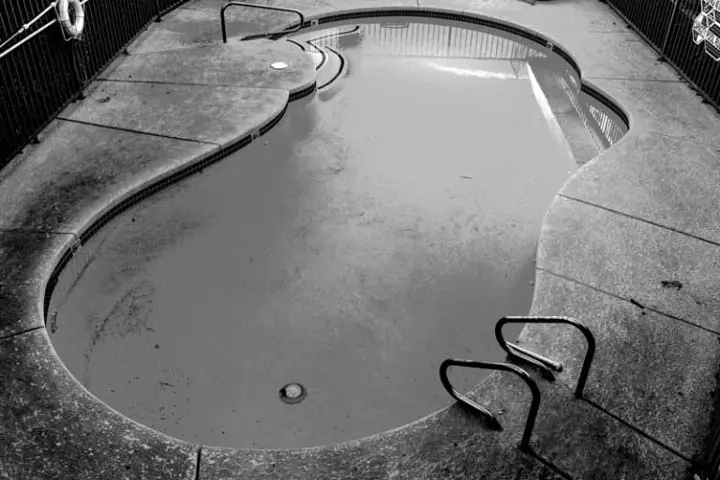Basdalm separation on images is a crucial technique in the realm of image processing and data analysis. This process involves distinguishing and isolating various elements within images, which can significantly impact fields ranging from medical imaging to autonomous vehicle navigation.
In this article, we will explore the intricacies of basdalm separation on images, its importance, and practical applications. We’ll also delve into various techniques, tools, and future trends related to this technology.
What is Basdalm Separation on Images?
Basdalm separation on images refers to the method used to isolate specific parts or features from an image. This technique is fundamental in several applications where precise identification and extraction of elements are necessary. The term "basdalm" is derived from combining "basic" and "algorithm," indicating a fundamental approach to image separation using algorithms.

Historical Context
The concept of image separation has evolved over time, from simple manual methods to sophisticated automated algorithms. Initially, image separation involved manual processes and rudimentary software tools. With advancements in technology, algorithms and software have become more efficient, enabling more accurate and faster separation processes.
Importance of Basdalm Separation on Images
The importance of basdalm separation on images is given below:
Applications in Different Fields
Basdalm separation on images has a wide range of applications. In medical imaging, it helps in identifying and analyzing different tissues or anomalies. In the automotive industry, it aids in object detection and navigation systems for autonomous vehicles. Other fields, such as remote sensing and manufacturing, also benefit from effective image separation techniques.
Benefits of Effective Separation
Effective basdalm separation on images enhances the accuracy of image analysis, leading to better decision-making and insights. It can improve the performance of automated systems, reduce errors, and provide clearer data for further analysis. By isolating specific elements, professionals can focus on the most relevant aspects of their work.
Techniques and Methods
There are two techniques and methods for basdalm separation on images:
Manual Separation Methods
Manual separation involves techniques such as image cropping, masking, and color-based separation. While these methods can be effective, they are often time-consuming and require significant human intervention. Manual techniques are generally used for simpler tasks or when high precision is required in specific areas.
Automated Separation Methods
Automated methods utilize algorithms and machine learning models to separate elements within images. Techniques such as edge detection, thresholding, and clustering are commonly used. Automated separation offers greater efficiency and accuracy, making it suitable for complex or large-scale tasks.
Tools and Software
Several tools and software are available for basdalm separation on images, including Adobe Photoshop, GIMP, and specialized image processing libraries like OpenCV. These tools offer various features for both manual and automated separation tasks.
Features and Capabilities of Each Tool
- Adobe Photoshop: Offers advanced masking, selection tools, and layer management.
- GIMP: Provides flexible image manipulation options and scripting capabilities.
- OpenCV: A powerful library for automated image processing and computer vision tasks.
Choosing the Right Tool for Your Needs
Selecting the appropriate tool depends on factors such as the complexity of the task, the required precision, and budget constraints. For professional use, software with advanced features and support for automation may be preferred. For simpler tasks, basic tools might suffice.
Best Practices
To achieve accurate basdalm separation on images, it is essential to use high-quality images, choose the right techniques, and validate results through testing. Regular calibration and adjustment of algorithms can also improve accuracy.
Common mistakes include using low-resolution images, incorrect parameter settings, and over-reliance on automated methods without human oversight. Avoid these pitfalls by ensuring proper image quality and manual verification where necessary.
Future Trends and Developments
Future developments in basdalm separation on images may include advancements in artificial intelligence and machine learning, leading to even more precise and efficient methods. Innovations in image sensors and computational imaging are also expected to contribute to the evolution of separation techniques.
The field is likely to see increased integration with real-time processing systems and improved algorithms that can handle more complex images and scenarios. Additionally, there may be greater emphasis on user-friendly interfaces and accessibility for non-experts.
Practical Tips and Applications
To implement basdalm separation on images effectively, start by clearly defining your objectives and selecting the appropriate methods and tools. Regularly review and adjust your approach based on the results and specific requirements of your tasks.
Common issues include poor image quality and algorithm misconfigurations. Address these by improving image inputs, refining algorithm settings, and conducting thorough testing to ensure optimal performance.
Conclusion
Basdalm separation on images is a vital technique with broad applications and significant benefits. By understanding the methods, tools, and best practices associated with image separation, professionals can enhance their work and achieve better results. As technology progresses, staying informed and adapting to new developments will be key to leveraging the full potential of basdalm separation on images.
FAQ
Q: What is basdalm separation on images?
A: Basdalm separation on images is the process of isolating specific elements within an image using various techniques and algorithms.
Q: How does basdalm separation on images benefit me?
A: It enhances accuracy in image analysis, leading to better decision-making and insights in fields like medical imaging, automotive navigation, and environmental monitoring.
Q: What are the most common methods for separation?
A: Common methods include manual techniques like cropping and automated techniques like edge detection and clustering.
Q: How do I choose the right tool for separation?
A: Consider the complexity of the task, required precision, and available budget when selecting a tool for basdalm separation.
Basdalm Separation on Images: Techniques and Trends